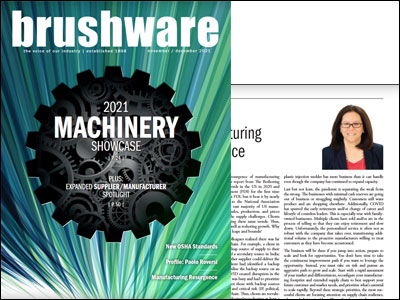There will a resounding resurgence of manufacturing near-term. According to a new report from The Reshoring Initiative®, reshoring broke records in 2020 and exceeded foreign direct investment (FDI) for the first time since 2013. Not only did it beat FDI, but it beat it by nearly 100%! Also, according to the National Association of Manufacturers (NAM), the vast majority (88%) expect sales, production, and prices to increase next year despite the supply challenges. Clients across the board are experiencing these same trends. Thus, there will be organic growth as well as reshoring growth. Why has this resurgence taken off by leaps and bounds?
During COVID, clients and colleagues realized there was far too much risk in their supply chain. For example, a client in Europe thought they had a backup source of supply to their China supplier because they had a secondary source in India; however, when COVID hit, neither supplier could deliver the requested materials. Another client had identified a backup source; however, they did not utilize the backup source on an ongoing basis. Thus, when COVID created disruption in the supply chain, the backup source was busy and had to prioritize current clients. Additionally, even those with backup sources realized the length, complexity, and critical risk (IP, political, etc.) of their end-to-end supply chain. Thus, clients are reevaluating their supply chain and reshoring/ near-shoring at least a portion of their supply chain.
On the other hand, companies already manufacturing in the U.S. gained an advantage. Not only were the majority considered essential and so could continue producing during lockdown, but they were able to take advantage of opportunities to support companies that couldn’t get enough supply to satisfy their customers. Customers realized the importance of suppliers that were able to meet their needs and those that used creativity, innovation and unique partnerships to meet changing needs, and they rewarded them with increased sales. Additionally, as is occurring with a plastic injection molding client, volumes are increasing even further as companies decide they prefer a regional source of supply and want to make the transition rapidly. This plastic injection molder has more business than it can handle even though the company has continued to expand capacity.
Last but not least, the pandemic is separating the weak from the strong. The businesses with minimal cash reserves are going out of business or struggling mightily. Customers still want product and are shopping elsewhere. Additionally, COVID has spurred the early retirement and/or change of career and lifestyle of countless leaders. This is especially true with family-owned businesses. Multiple clients have sold and/or are in the process of selling so that they can enjoy retirement and slow down. Unfortunately, the personalized service is often not as robust with the company that takes over, transitioning additional volume to the proactive manufacturers willing to treat customers as they have become accustomed.
The business will be there if you jump into action, prepare to scale, and look for opportunities. You don’t have time to take the continuous improvement path if you want to leverage the opportunity. Instead, you must take on risk and pursue an aggressive path to grow and scale. Start with a rapid assessment of your market and differentiators, reconfigure your manufacturing footprint and extended supply chain to best support your future customer and market needs, and prioritize what’s essential to scale rapidly. Beyond these strategic priorities, the most successful clients are focusing attention on supply chain resilience, talent, and digitization/ data. Those that focus on these priorities will gain ground rapidly and will pull quickly ahead of the competition. There will not be another opportunity of this magnitude during our lifetime, similar to the period immediately following the Great Depression. Are you prepared to thrive?
As originally published in Brushware Magazine on November-December 2021



